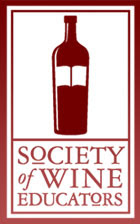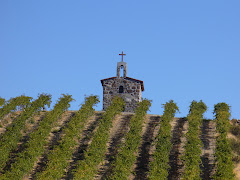
Lately, I have become enamored with all things Bordeaux. Obviously I picked a good time to really fall in love with Bordeaux – with the 2005 vintage, the wines were across the board incredible – though prices were astronomical. In light of that, Liquor Direct kicks off its first ever Bordeaux sale, one I hope we can repeat. And in honor of the event, I’d like to offer up a primer for those who want to learn more about these incredible wines, yet not invest a few years trying to decipher all the ins-and-outs of the region and its beautiful wines.
First off, let’s talk about the region of Bordeaux. The province of Bordeaux sits on the western Atlantic shores of France, in the southwesternly portion of the country. The town of Bordeaux sits at the mouth of the Gironde river, the body of water which separates the region into two distinct parts – the Left Bank and the Right Bank. The predominant number of communes (villages) lie within the Left Bank, while the Right Bank possesses primarily 2 communes (Pomerol and St.-Emilion).
Second, the grape varieties are set in stone: for whites, the grapes are Sauvignon Blanc, Semillon, Muscadelle, and to a lesser extent, Ugni Blanc. And for the reds, the grapes are Cabernet Sauvignon, Merlot, Cabernet Franc, Malbec and Petit Verdot.

When we in the business talk about Bordeaux, we often speak of the different Chateaux (wine houses) as either Left- or Right-Bank in style. The predominant grape in Left Bank reds is Cabernet Sauvignon, while Right-Bank usually boasts a majority of Merlot (although the commune of St.-Emilion does at times emphasize Cabernet Franc, such as Chateau Cheval Blanc). With the whites, Sauvignon Blanc is used primarily in the still wines, while Semillon tends to be the dominant grape used in the Sauternes and Barsac wines.
The lesser known aspect of the Bordeaux geography is that the Gironde divides into two smaller estuaries – the Garonne and the Dordogne. The land that stretches between these two smaller rivers is known as the Entre-Deux-Mers (between two seas). It is in this area that one finds the Loupiac (viewed by many as a sort-of poor man’s Sauternes, a real value). The Loupiac lies just across the banks of the Garonne from the Sauternes, Barsac and Ceron.
So let’s delve in a bit further, shall we?
THE LEFT BANK
From north to south, the communes are as follows:
1. The Northern Medoc
A. St.-Estephe
B. Pauillac
C. St.-Julien
2. Central Medoc
A. Listrac-Medoc
B. Moulis-en-Medoc
3. The Southern Medoc: Margaux
4. Graves and Entre-Deux-Mers
A. Barsac
B. Cadillac
C. Cerons
D. Entre-Deux-Mers
E. Graves
F. Loupiac
G. Pessac-Leognan
H. Sauternes
THE RIGHT BANK
From north to south, the communes are as follows:
1. Libournais
A. Fronsac
B. Canon-Fronsac
C. Lalande-de-Pomerol
D. Pomerol
E. St.-Emilion
F. Cotes du Castillon
G. Montagne-St.-Emilion
H. Lussac-St.-Emilion
I. St.-Georges-St.-Emilion
2. Dordogne
A. Cotes de Francs
B. Montravel
C. Haut-Montravel
D. Bergerac
E. Cotes de Duras
F. Monbazillac
G. Pecharmant
H. Rousette
I. Saussignac
The region is far more than just the usual suspects. However, it is the classified growths that get the predominance of attention. Beginning in 1855, the producers of the Medoc were gathered together in Paris by Napoleon III. It was under the simple guise of the chateaux coming together to rate the quality of their own wines. Appalled by the prospect of turning their neighbors against them, they rebelled at the idea, and the task was given to the Bordeaux Chamber of Commerce. The inevitable result was a ranking of the Chateaux into five categories: First, Second, Third, Fourth and Fifth Growths. Out of the hundreds of producers only 61 were classified.
The Classification of 1855 has stood pretty much intact since its creation, with only one change coming in 1973 (the elevation of Chateau Mouton-Rothschild from second to first growth), and has fueled the increase of asking prices for these wines with each passing vintage.
Sauternes and Barsac, also in 1855, ranked their chateaux, initially classifying a total of 22 producers, with 1 Premier Grand Cru Superieur Classe, 11 Premier Cru Classes and 12 Deuxiemes Cru Classes.
In 1953, Graves ranked 16 chateaux as Cru Classes. The list was revised in 1959 and remains as such today.
In 1954, St.-Emilion classified the chateaux into 11 Premier Grand Cru Classes and53 Grand Cru Classes. This classification is revised every decade, with the last being 1996. [Note: the 2006 revision was overturned by the French government after several chateaux were declassified. The decision is still causing upheaval in St.-Emilion 2 years later.]


These classifications have been confusing, and at times, deceiving, due to the implication of increasing quality with the higher rankings. Many critics feel this deception is most evident, and many of them, including Robert Parker, have often suggested that many chateaux, such as Chateau Leoville-Las-Cases, a second-growth producer now, should be elevated to first-growth status, and Chateau Lynch-Bages, currently a fifth-growth producer, should be elevated to second-growth status.
The reasons for these suggestions are obvious: the permanence of these rankings has led to rampant complacency and in some instances, utter collapse of winemaking standards.
Tomorrow, I will present the Classification of 1855 in full, as well as offer up some great second-label releases and inexpensive alternatives.











No comments:
Post a Comment